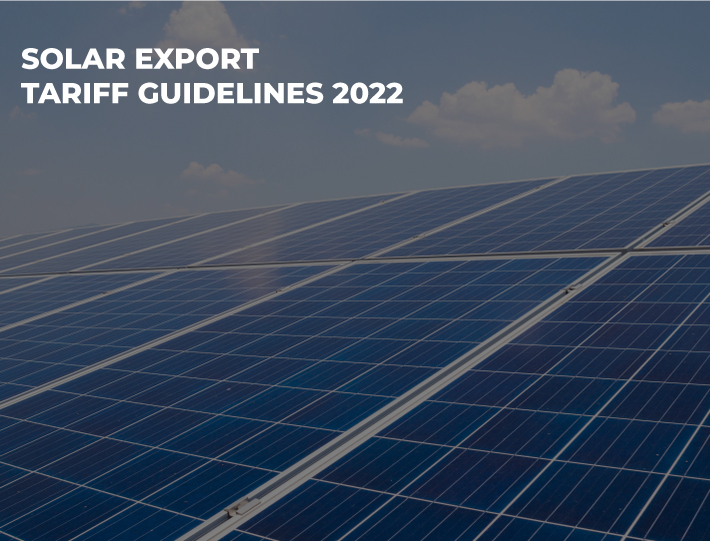Solar Export Tariff Guidelines 2022
Unless your system is off-grid or you have battery storage to keep power on site for later use, when your solar panels generate electricity, it must be used on site right away or routed to the grid. But what happens to the electricity you transmit to the system in excess? An export tariff is the rate at which you get reimbursed for each unit of generated power you sell to the National Grid.
How does the Solar Panel Export Tariff work?
The AEMC released its final determination on access, price, and incentive structures for distributed energy resources on August 12, 2021. The decision modifies the energy rules in order to integrate more small-scale solar into the grid while also encouraging the development of batteries and electric vehicles. This included lifting the export tariff prohibition, allowing networks to potentially propose to the AER that two-way pricing be allowed to match two-way energy flows on electricity networks.
As a result of this change, the AER is required to consult on and develop Export Tariff Guidelines that will provide information and guidance to distributors and other stakeholders on how networks will be required to justify any future proposals for two-way pricing, as well as how they should define the basic export level, which networks must provide to all customers with rooftop solar at no additional cost.
There will be no immediate implementation of any two-way pricing agreements. Export tariffs can only be implemented with the next TSS proposal, which must be submitted to the AER for approval every five years.
Current Solar Feed In Tariffs
Current Solar feed in tariffs are remuneration for the clean energy your solar panels return to the grid. Over the last few years, there have been numerous revisions to feed-in tariff legislation in all states and territories.
Although premium tariffs are no longer in effect, reduced current solar PV system prices mean they are no longer as crucial for solar to make financial sense as they once were. Increasing electricity costs are currently the primary motivation for purchasing a solar PV system, as it allows homeowners to control their energy expenditures.
Solar Export Tariff Draft Guidelines
The initial concept of Australia's energy infrastructure was for electricity to flow into buildings rather than out of them. However, as more people and companies around the country install solar panels, the latter is becoming more common. Aside from the solar rebate, which lowers the upfront cost of systems, one of the motivators has been the availability of feed-in tariffs, which provide a credit for excess solar energy exported to the mains grid.
Here’s a outline of guidelines:
1. Enabling two-way pricing does not imply that owners of rooftop solar power systems will be obliged to pay to export solar energy at all times, or even at all.
2. Any plan to impose an export charge must pass a rigorous AER pub test, which will include public comments.
3. The AER will encourage distributors to evaluate novel tariff structures and consumer or third-party responses through tariff trials.
4. DNSPs must justify charges – for example, only if solar exports contribute to higher network costs – and show how they computed them.
5. Historical expenditures connected with providing a network's intrinsic hosting capacity should not be recovered through export charges because these are covered by consumption charges.
6. DNSPs would need to engage with customers — not just solar owners – in a meaningful way.
7. A significant amount of lead time would be required before a distributor could provide new two-way pricing alternatives, as well as a transition strategy that clearly demonstrates how the distributor will account for the impact on customers.
8. A distributor will be required to provide a free basic solar export service up to a predetermined export threshold (which will be determined based on the conditions).
9. For a certain price, the same distributor may also offer a "premium" export service with a higher or no export threshold.
10. Only when exported power is anticipated to encourage future network investment might a fee be imposed. When the network would profit from additional exported solar electricity, a "negative" charge (rebate/credit) would be levied in addition to any current feed-in tariffs.
11. In most NEM jurisdictions, any two-way pricing ideas will not take effect until 2025 at the earliest; for solar owners in Victoria, it will be the next year.
Conclusion
While Solar power as we all know is the best way to generate renewable pollution free power, Solar Panel Export Tariff motivates people to adopt Solar Systems as a renewable way to generate energy. Making Solar Export Tariff more user friendly would certainly help us in achieving carbon neutral status soon.

